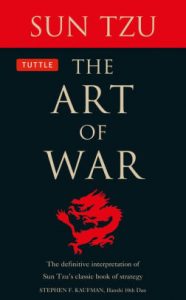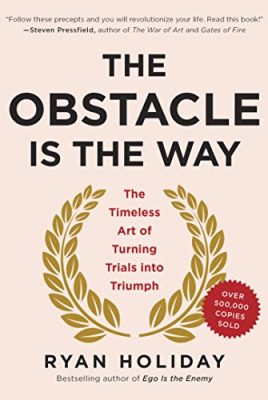Note: This post contains affiliate links which means if you click on a link and purchase an item, we will receive an affiliate commission at no extra cost to you.

Why This Book Matters:
The Art of War is the quintessential guide to military strategy that for two thousand years has been a fixture of Chinese military history and culture.
Sun Tzu’s direct and wise words have transcended culture, time, and circumstance and are still relevant today in a variety of arenas.
Key Takeaways:
- To defeat your enemy you must plan meticulously
- You can’t be victorious if you do not study your enemy and weigh the strengths and weaknesses of both sides.
- Example: A leader who plans for everything always beats one who doesn’t plan at all.
- Never enter battle unless you know you can win
- Defeat is never an option, so you must wait patiently for the perfect opportunity to strike, which can be a test of your resolve.
- Example: A military leader decides to strike when their scouts observe opposing forces becoming lax with security protocol.
- You must gain complete autonomy for decision-making to secure victory
- Sovereigns or sponsors can become an impediment to victory because they insert their influence into battle. Your superiors must have total faith in you and your judgment.
- Example: The risk-averse ruler pulls their army back despite the commanding officer’s assessment that now is the time to strike.
- Conserve resources with proper planning and strategy
- Resources are expensive and finite. Use strategies like foraging, espionage, and quick destruction-limiting action to expend as little of your own resources as possible.
- Example: A skillful general with a large army can seize an entire city without destroying the important resources within it, so they can use those resources for their own good.
- Ensure victory by practicing deception
- Your enemy will lose if they operate in a state of confusion. Pretend you are weak when you’re strong, appear disordered when you are actually completely organized, give the appearance your force is incompetent when the direct opposite is true.
- Example: As a cat plays with a mouse, a good leader gives the enemy the impression their own victory is imminent to lure them into a battle they are sure to lose.
- The more you observe and adapt, the greater your chances are for victory
- Study the terrain and how the enemy uses it and identify areas to avoid. Study the enemy combatants: are they beleaguered or strong?
- Example: A leader who employs scouts may find that the enemy forces are low on supplies and are camped along a route that can easily become isolated.
- Manage your troops sternly but treat them as if they were your own children
- Your troops will follow you anywhere if you endear them to you, but you must also command them with authority to stay strong and united when courage is needed.
- Example: Soldiers will fight to the death if they believe wholeheartedly in their leader.









Leave a Reply
View Comments